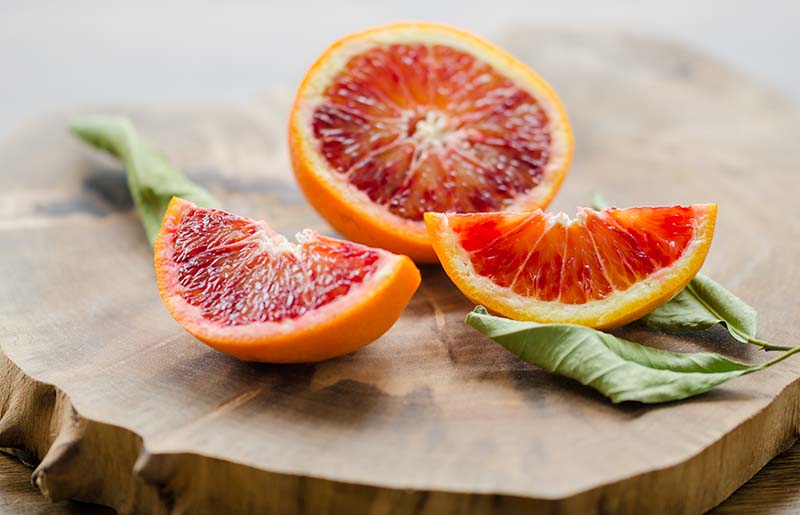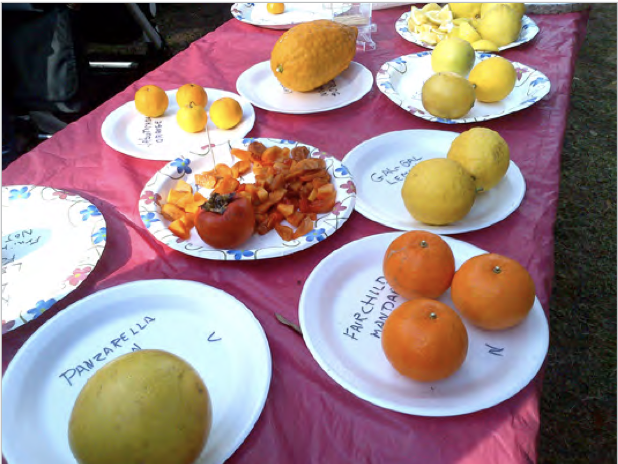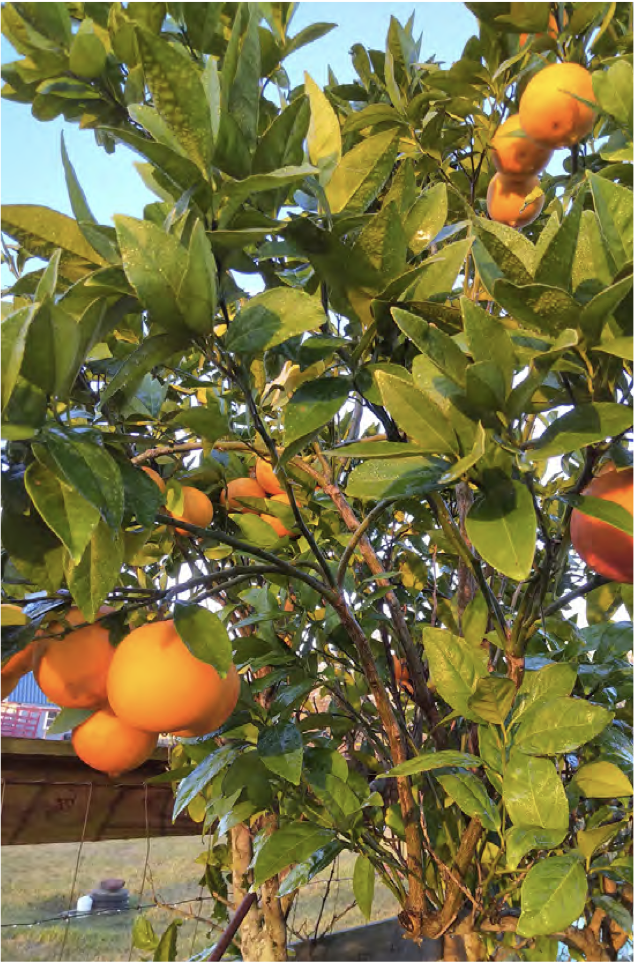
Vitamin C-Sick for Citrus
Article and photos by Terri Simon, Master Gardener

| Why is it important to include vitamin C in your diet? For thousands of years a condition called scurvy killed many sailors. It’s estimated two million sailors died. Scurvy is caused by a lack of vitamin C, which is found in citrus. Symptoms included bleeding gums, swollen legs and gross ulcers. The affected person becomes emaciated and dies. The British were among the first to realize that scurvy was caused by a lack of vitamin C and soon carried limes and lemons on their sailing ships. That is why they were given the nickname “Limeys.” |
 Sunshine, my Moro blood orange pre- Ice Storm Uri
|
If you are starting over like some of us, or just starting out, what type of citrus tree will you purchase? Decide what you want in a citrus tree. There are so many varieties available. Our growing zone is 9B so purchase citrus trees that will do well here. Do you prefer oranges, lemons, limes, grapefruit or some of the other esoteric varieties out there? How much space do you have? Another factor to weigh in is children. Small children like the smaller citrus varieties that have fewer seeds, fit in their small hands and are easy to peel. Perhaps a satsuma citrus tree would be appropriate. Alfred Froberg, owner of a nearby produce farm once told me he liked Owari satsumas because they could tolerate cooler temperatures. Do you want an orange tree for juicing or one that you eat out of hand? The Republic of Texas orange has been in Texas since the mid 1800s. It grows in zones 8-11 and can reach a height and width of 15 feet. I prefer this orange as a juicing orange. It is sweet but it does have a lot of seeds. The color is vibrant and the taste is perfect. My personal favorite is the Moro blood orange. It is tasty, has few seeds, is easy to peel and beautiful as well. If the temperature is cooler (but not freezing), the peel and flesh of this orange turn red. Some gardeners have commented that the improved Meyer lemon tree is easy to grow. It is large and has a sweeter, less acidic taste. That’s because it is not a true lemon, it is a hybrid between an orange and a lemon. There are some tables included in this month's issue of Urban Dirt that list citrus varieties and descriptions as well as diseases, so consider those when deciding on the variety you want to purchase. If your growing space is limited, there are citrus trees grafted with more than one variety, but these are expensive and harder to find.
Once you have decided on your citrus tree, consider planting it with some companion plants. Companion plants are plants placed near each other for specific benefits. It can be a oneway benefit or a mutual benefit. A companion plant with shallow roots should be considered so that its roots will not compete with the citrus tree. Several advantages for using a companion plant with your citrus include: attract beneficial insects or deterring pests, limiting evaporation, helping pollination, helping to cover or amend the soil, preventing weeds, and serving as a trellis and fixing nitrogen. By using companion plants you can also obtain the most use of the square footage of your garden. Examples of some suitable companion plants for your citrus tree include: lavender, rosemary, and members of the allium family which include chives, garlic and onions and nasturtiums. This month’s issue also features a companion plant article for nasturtiums written by MG Becky Lowicki. Be sure to check that out. To learn more about citrus, attend one of our Green Thumb Lectures. It will be given online. This month’s topic is citrus trees. For info on the Green Thumb lectures go to: https://hcmga.tamu.edu/2022-green-thumb-gardening-series/
Source:Harris County Master Gardeners Urban Dirt Newsletter (October 2022 Edition)
About Urban Dirt
Each month, Harris County Master Gardeners publishes an informative, resourceful newsletter entitled "Urban Dirt". This article was derived from the October 2022 edition. To read the October 2022 edition of this newsletter, click the button below.
URBAN DIRT - octoBER 2022 EDITION

